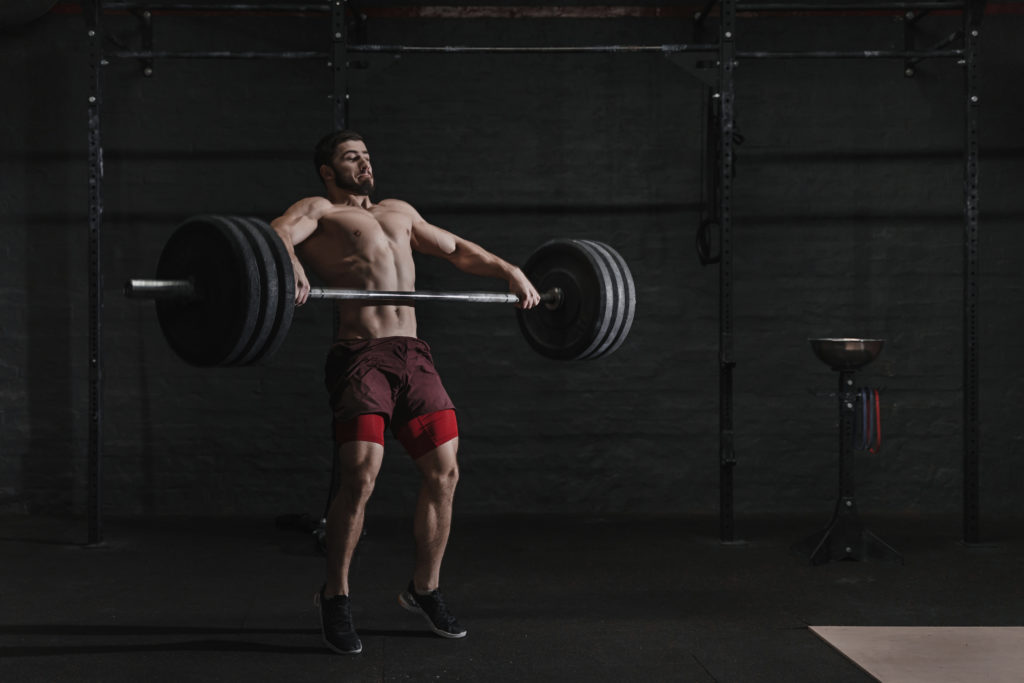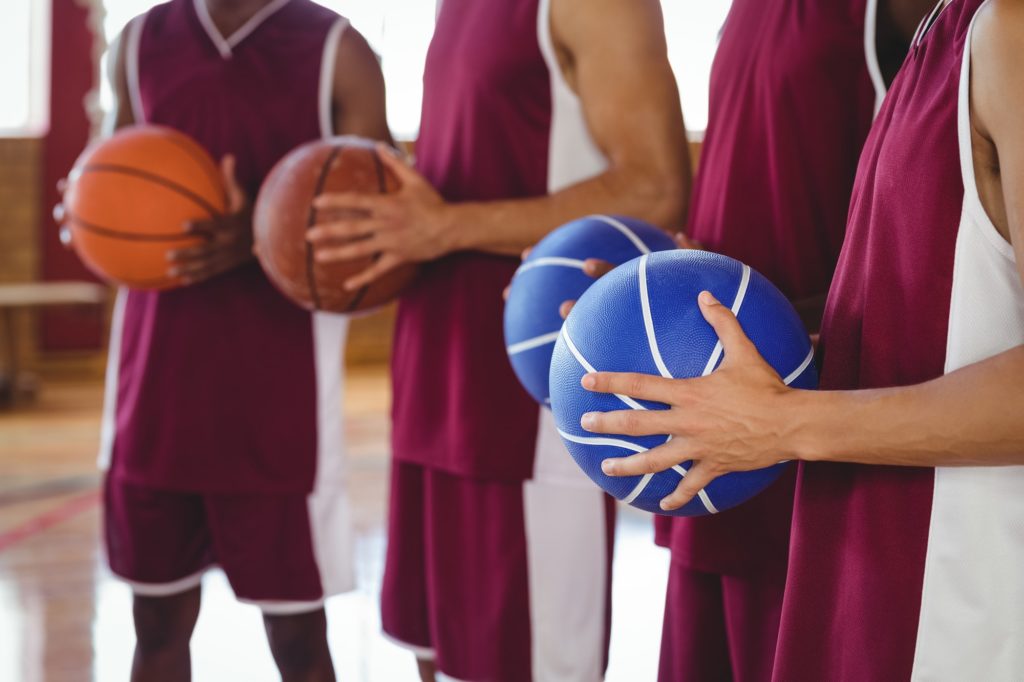It’s not lost on me that the title of this particular blog post may ruffle a few feathers out there. There are many coaches and facilities in the world who implement the OLY lifts with their athletes and find great success with this approach.
Conversely, there are also many coaches and facilities in the world who d0 not use the OLY lifts[footnote]You can include myself on that list.[/footnote] and as a result have been blacklisted from S&C Twitter get resounding results as well.
What follows is one coach’s (Syracuse, NY based strength & conditioning coach Ricky Kompf) opinion with a solid rationale for why he falls into the latter category above.
I hope you give it a read.

Why College Athletes Shouldn’t Use Olympic Lifts
First off I want to start this article off by saying Olympic lifts can be a great way to develop power.
(step away from the pitchforks, please)
This is in no way shape or form is a diatribe trying to bash Olympic lifts as a group of exercises. They are a tool and just like any tool in the weight room, they have their time and place.
And that time and place should not be in the college weight room as a main means of training power in their respective sport.
I see it every year, athletes who we have been working with for years in high school finally gain some respectable competency in the weight-room and reach the point where they can play their sport at the next level.
Their collegiate strength coach sends them their summer training program and there it is:
- Hang cleans
- Snatches
- Power cleans
- 6 AM lifts
A little piece of me dies inside and I have to fight the urge not to go how and yell at my cats.
How can you except an athlete who you have never trained with or seen workout in person to execute the Olympic lifts correctly and effectively without your watchful eye? It then becomes our job to teach these lifts to the athletes which I’m happy to do, but it undoubtably takes away from the training due to the time and energy restraints it puts on our training.
To make things worse, when these athlete head off to college, train with these exercises as their key performance indicators and main source of power training, 9 times out of 10 they come back to our gym the next year weaker and many times slower.

I cannot fully contribute these exercises to the outcome, this is simply an observation I’ve noticed for years.
Here’s why I believe these lifts should not be apart of a college athlete’s training program and are actually causing a decrease in performance.
1. Competing Demands
The Olympic lifts are highly technical.
College athletes are arguably at the peak for their sport’s performance (or at least very close to it). That means the demand of skill in their sport takes up a large portion of their training…
…and rightfully so.
They are trying to reach mastery in their craft.
They are not Olympic weight lifters. They are team sport athletes and should be treated as such.
Learning and training with the Olympic lifts takes a high level of skill, skill that is learned through years and years of training and working at it. By spending the time required to be proficient at these exercises you will be taking away from the motor learning time and energy that could be used in their sport.

You can only master so much at one time from a motor learning perspective and choosing a highly technical form of exercise during collegiate years will only take away from this mastery.
2. They Won’t Be Good Enough For It To Be Effective
The Olympic lifts do a great job of enhancing powerful triple extension, but you don’t reach peak power until you reach about 80% of you max in an Olympic lift.
For the bulk of collegiate aged athletes who have little experience training with the OLY lifts, they likely won’t truly reach this level for a number of years because of how long it takes to master the skill.
(ideally, one would have started at the age of twelve with a PVC stick and ample time…not at 18 with USC at home next week).
I’d rather utilize an exercise like the Trap Bar Jump, which has a much lower learning curve yet yields comparable peak power production in a matter of minutes (not years).
This way I can develop strength, power and speed with as little amount of time as possible. As a result, the athlete can spend more energy on their sport while still experiencing the benefits of a strength & conditioning program.
An argument can be made that you could, over the course of the four years, systematically teach a college athlete how to perfect the Olympic lifts in order to reap their benefit.
However, in my experience most (not all) collegiate strength coaches incorporate these lifts using max loads and testing them as a key performance indicator right away.
This is not ideal if you ask me.
Some strength coaches do a great job and implement the OLY lifts responsibly, but I’d still argue that teaching these lifts over the course of four years is a drain on athletes’ time, energy and resources.
I’d Recommend the Following Exercises Instead:
Trap Bar Jumps
Trap Bar High Pulls
Trap Bar Speed Pulls
Sumo Speed Pulls
Band Resisted Speed Pulls
Dynamic Effort Box Squats
3. Power Is Plane Specific
Team sport is rarely played in the same plane of motion as the Olympic lifts.
When developing power that transfers over to your sport it’s better to do it in the same or similar planes of movement and joint angles that you’ll see in your sport to have the most transfer.
Using sprints, jumps and throws are great ways to bridge the gap and usually are better options than the Olympic lifts.
Here’s some exercises that can train speed and power with great transfer to sport:
10 Yard Sprints
Max Velocity Sprints
Partner Chase Drills
Rotational Med Ball Toss
Skater Variations
Broad Jump Variations
Overhead Med Ball Throws
Box Jumps
4. Other Variations & Methods
Other variations and methods that have a great effect on power training and can be taught quickly include the use of accommodating resistance with bands and chains as well as contrast training.
Accommodating resistance allows you to accelerate through a full range of motion because the resistance increases as you get into joint angles that can handle greater loads. This allows you to train power at all joint angles in a lift.
In addition to that the use of bands provides a unique training stimulus in which the eccentric portion of the lift is accelerated forcing a great amount deceleration training as well as a high-level reversal strength by using the stretch shortening cycle.
There’re a couple examples of this is the exercises listed above.
Contrast training is a method to peak speed and power production in which you use a heavy compound movement like a squat or deadlift and go right into an explosive expression of speed and power like a sprint, jump or throw.
Note from TG: I posted about contrast sets recently HERE.
The heavy lift provides an activation of higher threshold motor units that will transfer into a more explosive athletic movement.
Here’s some examples of contrast training.
Pre-Season Football Contrast Set
Back Squat —-> Box Jump
Banded Bulgarian Split Squat —-> Half Kneeling Sprint



